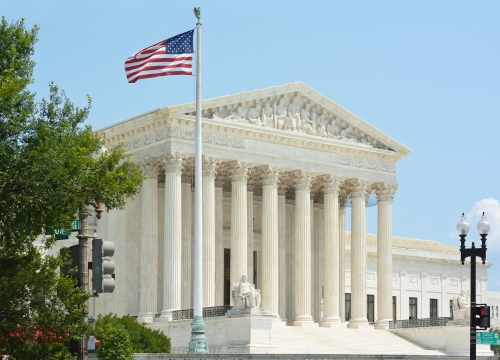Patent Owners file Amicus Brief in Support of Cellect’s Rehearing Petition | Caldwell
Earlier this year in In re Cellect, the U.S. Court of Appeals for the Federal Circuit issued a precedential decision regarding obvious-type double patenting (“ODP”). The Court held that when members of a patent family differ in their expiration dates solely due to patent term adjustment (“PTA”), the earlier-expiring family members may be used as the basis for an obvious-type double patenting attack on the later-expiring family members.[1] The holding has garnered push-back from a multitude of actors. Cellect filed a petition for re-hearing en banc earlier this month and pharmaceutical heavyweights—including Merck, AstraZeneca, Amgen, Novo Nordisk, and Johnson & Johnson—filed Amicus Curiae Briefs supporting Cellect’s petition.
In Re Cellect
In 2019, Cellect, LLC sued Samsung for infringement of four Cellect patents in the United States District Court for the District of Colorado. Samsung requested ex parte reexaminations of the patents, asserting that they were invalid based on obvious-type double patenting (“ODP”).
Pursuant to 35 U.S.C. § 154(b), each patent had been granted PTA due to USPTO delay during prosecution. Additionally, each patent claimed priority from the same application. Therefore, the patents would have expired on the same day but for grants of PTA. In each reexamination proceeding, the examiner issued a final office action determining that the challenged claims were obvious variants of Cellect’s prior-expiring references (again, the “prior expiring references” were only “prior-expiring” because the patents at issue were granted PTA). Cellect appealed to the Patent Trial and Appeal Board arguing that determining patentability under OTP standards should be based on the expiration dates of the patents before any PTA is added to the patent term. The Board sustained the examiner’s determinations and Cellect appealed to the Federal Circuit.
The Federal Circuit affirmed the Board’s ruling, holding that the expiration date used for an ODP analysis is the expiration date after PTA has been added.[2] The court explicitly noted that the holding is different than Novartis, where the Court ruled that ODP does not invalidate a validity obtained Patent Term Extension (“PTE”).[3] Accordingly, In Re Cellect established the following: “while an extension pursuant to the PTE is added to the patent term after a consideration of ODP, an adjustment pursuant to PTA should be added to the patent term before a consideration of ODP.”[4]
As it stands, the holding understandably has profound implications for U.S. patent portfolios. For example, a parent patent application that is statutorily granted PTA may be invalidated by a continuation application solely because the parent expires after the continuation due to PTA.
What’s Next?
Cellect and other patent owners are urging the Federal Circuit to reconsider its ruling. In its petition for a rehearing en banc, Cellect relies on the legislative history of § 35 U.S.C. 154 (b) to argue that PTA and PTE should not be treated differently when determining whether claims are unpatentable due to ODP. Additionally, Cellect and Amici argue that judge-made law—in the form of ODP—cannot be used to negate the statutory right of PTA provided in § 154(b).
Whether the Federal Circuit decides to rehear In Re Cellect remains uncertain. As of this writing, the Court has not ruled on Cellect’s petition. However, given the attention that the ruling has received, a rehearing seems plasuible. Patent professionals should monitor the situation closely.
[1] In re Cellect, LLC, 81 F.4th 1216 (Fed. Cir. 2023).
[2] Id. at 1226.
[3] Novartis AG v. Ezra Ventures, LLC, 909 F.3d 1367, 1373 (Fed. Cir. 2018).
[4] In re Cellect, LLC, 2023 WL 3993031, at *14.v






